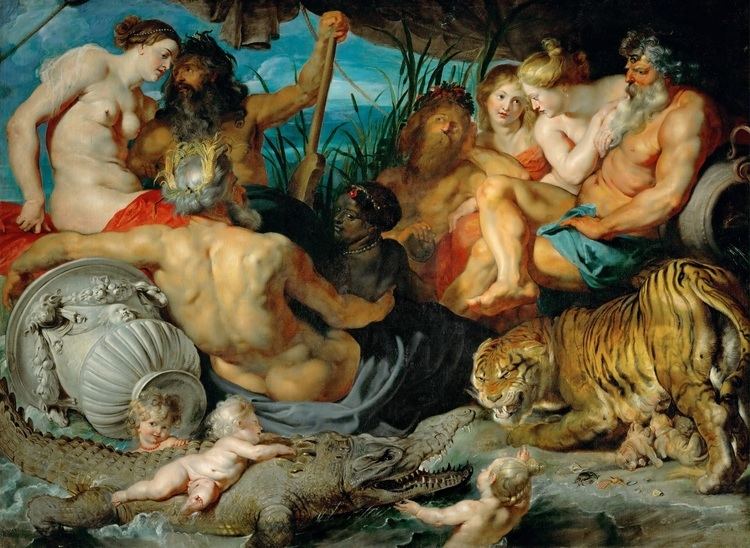Year 1612–1614 or 1615 Period Baroque | Medium Oil on canvas Created 1614 | |
 | ||
Dimensions 209 cm × 284 cm (82 in × 112 in) Similar Peter Paul Rubens artwork, Baroque artwork | ||
The Four Continents, also known as The Four Rivers of Paradise, is a painting by Flemish artist Peter Paul Rubens, made in the 1610s. It depicts the female personifications of four continents (Europe, Asia, Africa and America) sitting with the personifications of their respective major rivers – the Danube, the Ganges, the Nile and the Río de la Plata. Europe is shown on the left, Africa in the middle, Asia on the right and America behind it, to the left. The tigress, protecting the cubs from the crocodile, is used as a symbol of Asia. The personification of the Danube holds a rudder. The bottom part of the painting shows several putti. Painted during a period of truce between the Dutch Republic and Spain, the river allegories and their female companions in a lush, bountiful setting reflect the conditions that Rubens hoped would return to Antwerp after military hostilities.
Artist Elizabeth McGrath proposed a different interpretation of the female figures on the painting, believing them to be nymphs instead. McGrath also suggested different river names, the Tigris instead of the Danube and the Euphrates instead of the Río de la Plata, arguing that those names also appear in Christian exegesis.
